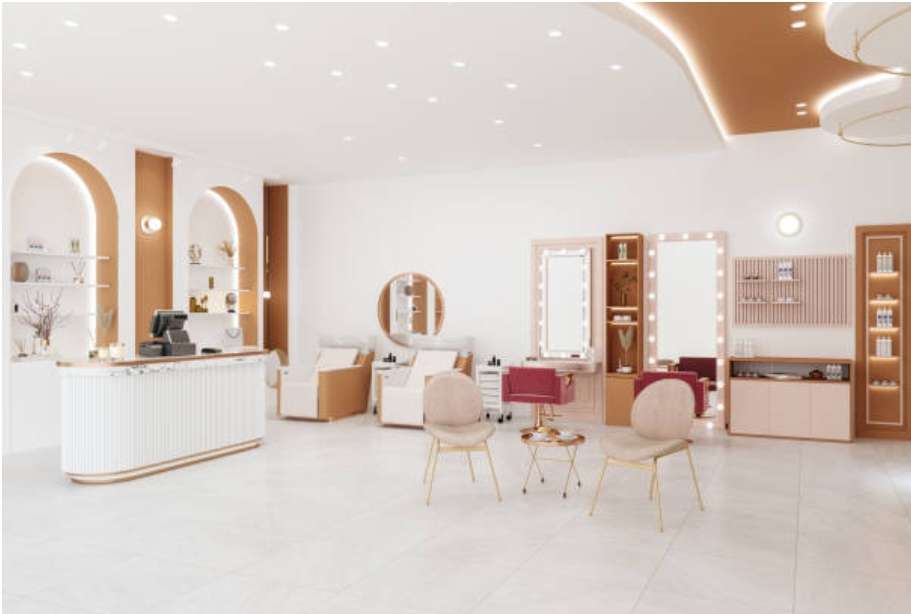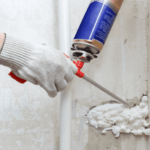In the ever-evolving world of beauty and wellness, the design of a salon plays a pivotal role in attracting clients and creating an ambiance that reflects the latest trends.
A well-designed beauty salon not only enhances the overall experience for customers but also sets the stage for creativity and innovation among salon professionals.
In this article, we will explore the key elements of designing a trendsetting beauty salon haven that seamlessly blends style and functionality.
Understanding the Brand Identity
Before delving into the specifics of salon design, it’s crucial to understand and define the brand identity. The design of a beauty salon should align with the brand’s ethos, target audience, and the services it offers.
Whether it’s a modern and minimalist salon or a vibrant and eclectic space, the design should communicate the essence of the brand to clients the moment they step through the door.
Defining the Brand
Begin by identifying the core values and unique selling points of the salon. Is it known for cutting-edge hairstyles, eco-friendly products, or a luxurious spa experience? The design should amplify these characteristics, creating a cohesive and memorable brand image.
Target Audience Analysis
Understanding the target audience is paramount. Different demographics have varying preferences when it comes to ambiance and aesthetics.
A salon catering to a younger, trend-conscious crowd might opt for bold and contemporary designs, while a salon targeting a more mature clientele may lean towards classic and timeless elements.
Layout and Flow
The layout of a beauty salon significantly impacts the overall customer experience. An effective layout should facilitate a seamless flow of clients and staff while maximizing the use of available space.
Reception Area
The reception area serves as the first point of contact for clients. It should be inviting and reflective of the salon’s style. Comfortable seating, a well-designed reception desk, and strategically placed retail displays can enhance the overall ambiance.
Workstations and Treatment Areas
Efficiently organizing workstations and treatment areas is essential for the smooth functioning of the salon. Consider the placement of styling stations, shampoo sinks, and spa treatment rooms. Adequate spacing between workstations ensures privacy for clients and a comfortable working environment for staff.
Multi-functional Spaces
Flexibility in design allows for multi-functional spaces. For example, a salon with movable partitions or versatile furniture can adapt to different service needs throughout the day.
This versatility enhances the salon’s efficiency and can lead to a more dynamic and engaging customer experience.
Lighting Design
Noir Lighting is a key element in salon design, impacting both the visual appeal of the space and the functionality of the services provided.
Natural Light
Whenever possible, incorporate natural light into the salon. Large windows or skylights not only create a more open and airy atmosphere but also provide a more accurate representation of hair color and makeup application.
Task Lighting
Task lighting is crucial in work areas like styling stations and treatment rooms. Adjustable and focused lighting ensures that salon professionals can see their work clearly, contributing to precise and high-quality services.
Ambient Lighting
Ambient lighting sets the mood of the salon. Whether it’s soft and warm for a cozy feel or bright and energetic for a vibrant ambiance, choosing the right ambient lighting enhances the overall client experience.
Color Palette and Materials
The color palette and materials used in salon design contribute significantly to the overall aesthetic and atmosphere.
Choosing a Color Scheme
Consider the psychology of colors when selecting a palette. Warm tones like peach and gold create a welcoming environment, while cool tones like blues and greens evoke a sense of calm. A well-thought-out color scheme can also reinforce the salon’s brand identity.
Durable and Easy-to-Maintain Materials
Salons experience high traffic and exposure to various products, making durability a top priority. Choose materials that are not only aesthetically pleasing but also easy to clean and maintain. Resilient flooring, stain-resistant upholstery, and durable countertops are practical choices for a busy salon environment.
Signature Elements
Incorporate signature elements that make the salon unique. This could be a custom-designed feature wall, statement furniture pieces, or unique flooring patterns. Signature elements not only contribute to the salon’s branding but also create memorable experiences for clients.
Technology Integration
The integration of technology in salon design goes beyond just providing Wi-Fi for clients. From innovative salon management systems to augmented reality mirrors, technology can enhance both the customer experience and operational efficiency.
Salon Management Software
Investing in salon management software streamlines appointment scheduling, inventory management, and customer communication. This not only improves the overall efficiency of the salon but also provides clients with a seamless booking and checkout process.
Smart Mirrors
Smart mirrors equipped with augmented reality technology allow clients to visualize different hairstyles and colors before making a decision. This interactive experience adds a modern and tech-savvy touch to the salon and empowers clients to explore new looks with confidence.
Digital Displays
Digital displays can be used for showcasing the latest trends, promoting salon services, or even featuring client testimonials. These displays contribute to the salon’s overall aesthetic and keep clients engaged during their visit.
Comfort and Amenities
Creating a comfortable and relaxing environment for clients is paramount in salon design. Incorporating amenities that go beyond basic services can elevate the overall client experience.
Comfortable Seating
From waiting areas to styling stations, investing in comfortable seating is a must. Ergonomic chairs not only provide comfort for clients during services but also contribute to a positive overall impression of the salon.
Beverage Stations
Consider adding a beverage station where clients can enjoy a complimentary drink during their visit. This small touch adds a level of hospitality and enhances the overall experience.
Relaxation Zones
For salons offering spa or relaxation services, creating designated relaxation zones with comfortable seating and ambient lighting allows clients to unwind before or after their treatments.
Sustainability and Eco-Friendly Design
In the era of increased environmental awareness, incorporating sustainable and eco-friendly design elements is not only responsible but also appealing to a growing segment of consumers.
Green Materials
Opt for materials that have a lower environmental impact, such as recycled or upcycled materials. From furniture to decor items, there are eco-friendly options that align with sustainable design principles.
Energy-Efficient Lighting
Choose energy-efficient lighting solutions, such as LED bulbs, to reduce the salon’s carbon footprint. This not only aligns with sustainability goals but also contributes to long-term cost savings.
Waste Reduction Strategies
Implement waste reduction strategies, such as recycling bins and eco-friendly product packaging. Communicate these efforts to clients, showcasing the salon’s commitment to environmental responsibility.
Branding Through Interior Design
The interior design of a beauty salon is a powerful tool for branding. Every element, from the furniture to the decor, should align with the salon’s identity.
Logo Integration
Incorporate the salon’s logo into the interior design in subtle yet effective ways. This could be through custom signage, branded decor elements, or even on staff uniforms. Consistent branding reinforces the salon’s identity in the minds of clients.
Theme Consistency
If the salon has a specific theme or concept, ensure consistency throughout the space. A cohesive design that aligns with the theme creates a visually appealing and memorable environment.
Merchandising Opportunities
Create opportunities for merchandising by strategically placing retail displays within the salon. This not only boosts revenue but also allows clients to take a piece of the salon experience home with them.
Conclusion
Designing a trendsetting beauty salon haven requires a thoughtful approach that considers both aesthetics and functionality. By understanding the brand identity, optimizing the layout, incorporating innovative technology, prioritizing comfort, and embracing sustainability, a salon can create an environment that captivates clients and sets the stage for continued success in the competitive beauty and wellness industry. With careful planning and a creative vision, a beauty salon can become not just a space for services but a destination that leaves a lasting impression on clients.



